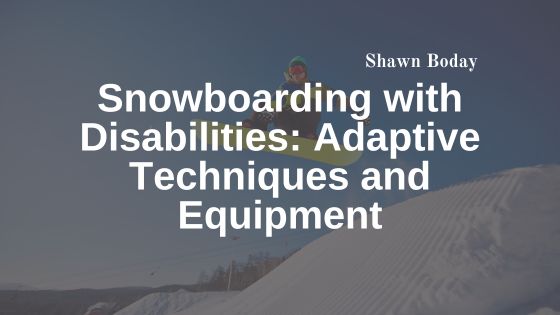Snowboarding is an exhilarating sport that provides a unique sense of freedom and adrenaline rush. For individuals with disabilities, adaptive snowboarding opens up new opportunities to experience the thrill of the slopes. Advances in technology and adaptive techniques have made it possible for people with a wide range of disabilities to enjoy snowboarding. This blog explores the adaptive techniques and equipment that make snowboarding accessible to everyone.
The Evolution of Adaptive Snowboarding
Early Challenges and Innovations
In the early days of adaptive snowboarding, the lack of specialized equipment and techniques posed significant challenges. Early adaptive snowboarders had to rely on modified equipment and creative solutions to navigate the slopes. Over time, the snowboarding community recognized the need for more inclusive approaches, leading to the development of adaptive snowboarding equipment and techniques.
Modern Adaptive Snowboarding
Today, adaptive snowboarding has evolved significantly. Specialized equipment, combined with innovative techniques, enables individuals with various disabilities to snowboard safely and effectively. The integration of adaptive snowboarding into mainstream competitions and events highlights the progress made in this field.
Adaptive Techniques
Sit-Down Snowboarding
Sit-down snowboarding, also known as sit-snowboarding or sitboarding, is an adaptive technique designed for individuals with lower limb disabilities or those who cannot stand for extended periods. This technique uses a specially designed sit-snowboard, which includes a seat mounted on a snowboard. Riders use outriggers, which are ski poles with small skis at the ends, to maintain balance and control.
Stand-Up Snowboarding with Adaptive Bindings
For individuals with balance or coordination issues, adaptive bindings provide additional support. These bindings can include extra straps, high-back support, or custom adjustments to accommodate prosthetics or orthotics. Stand-up snowboarding with adaptive bindings allows individuals to experience snowboarding while maintaining stability and control.
Tethering
Tethering is a technique used for individuals with visual impairments or those who need guidance on the slopes. A guide, often an experienced snowboarder or instructor, uses a tether to help the rider navigate the terrain. The guide provides verbal instructions and physical support to ensure a safe and enjoyable experience.
Adaptive Equipment
Sit-Snowboards
Sit-snowboards are a crucial piece of adaptive equipment for sit-down snowboarding. These boards are designed to provide stability and control, with a seat that is securely mounted to the snowboard. The design allows for easy maneuverability, enabling riders to carve turns and navigate various snow conditions.
Outriggers
Outriggers are essential for maintaining balance and control while sit-down snowboarding. These devices function like ski poles with small skis attached to the ends, providing additional stability. Outriggers can also be used by stand-up snowboarders who need extra support for balance.
Custom Bindings and Prosthetics
Adaptive bindings are designed to accommodate various physical needs, including prosthetics and orthotics. These bindings can be customized to fit individual requirements, ensuring a secure and comfortable fit. Some riders may also use specialized prosthetics designed specifically for snowboarding, which provide the necessary support and flexibility.
Training and Support
Professional Instruction
Professional instruction is essential for individuals learning adaptive snowboarding. Instructors trained in adaptive techniques can provide personalized guidance and support, ensuring that riders develop the necessary skills and confidence. Many ski resorts offer adaptive snowboarding programs with experienced instructors.
Community and Peer Support
The adaptive snowboarding community is a valuable resource for new riders. Connecting with other adaptive snowboarders can provide encouragement, tips, and a sense of camaraderie. Many organizations and events focus on adaptive snowboarding, offering opportunities to learn, compete, and share experiences.
Conclusion
Snowboarding with disabilities is not only possible but can be an incredibly rewarding experience. Advances in adaptive techniques and equipment have opened up the slopes to individuals with a wide range of disabilities. With the right support and resources, anyone can enjoy the thrill of snowboarding and the freedom it brings. Whether through sit-down snowboarding, adaptive bindings, or tethering, adaptive snowboarding offers a pathway to adventure and inclusivity in the world of winter sports.

